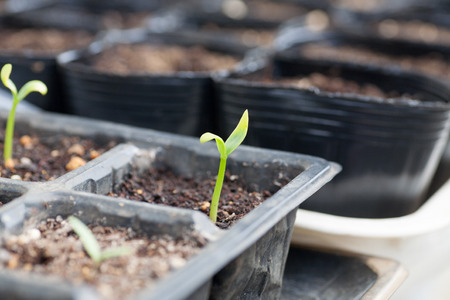Introduction to Allotments and Community Gardens in the UK
Allotments and community gardens hold a special place in the hearts of many across the United Kingdom, representing more than just spaces for growing fruit and veg. Rooted in a tradition that dates back to the early 19th century, these plots were originally established to help working families supplement their diets and support local food security. Today, they remain vital social hubs where people come together to share knowledge, foster community spirit, and enjoy the benefits of homegrown produce. In towns and cities from Glasgow to Bristol, allotments are not only cherished for their historical significance but also as sanctuaries of biodiversity and wellbeing amidst urban sprawl. The unpredictable British weather, however, often poses challenges for consistent cultivation. This is where protected growing spaces—such as greenhouses and polytunnels—play an increasingly crucial role. By offering shelter from harsh winds, sudden frosts, and relentless rain, these structures extend the growing season and create reliable conditions for a wider variety of crops. Their presence on allotment sites and in community gardens has become an essential part of modern urban horticulture, bridging traditional gardening practices with practical solutions for changing climates.
2. What Are Greenhouses and Polytunnels?
Greenhouses and polytunnels are both essential structures in British allotment and community gardening, designed to extend the growing season and provide a controlled environment for a variety of crops. Although they share similar goals, their construction, materials, and practical application differ in ways that are especially relevant to local gardeners.
Definitions
A greenhouse is typically a permanent structure made from glass or rigid transparent panels set into an aluminium or timber frame. Its robust design offers excellent insulation, consistent light transmission, and long-term durability. Greenhouses have become somewhat iconic on British allotments, often seen as an investment that can last for decades with proper care.
A polytunnel, by contrast, is a semi-permanent structure constructed using a series of metal hoops covered with polythene sheeting. While generally less expensive than greenhouses, polytunnels can be quickly erected or dismantled, making them popular among community garden projects where flexibility and cost-effectiveness are key considerations.
Practical Differences
| Feature | Greenhouse | Polytunnel |
|---|---|---|
| Typical Materials | Glass or polycarbonate panels | Polythene sheeting over metal hoops |
| Permanence | Permanent structure | Semi-permanent/temporary |
| Cost | Higher initial investment | Lower initial investment |
| Light Transmission | Excellent and consistent | Good but may diffuse more |
| Lifespan | 10–30 years or more | 5–10 years (polythene needs replacing) |
Local Gardening Contexts
The choice between greenhouses and polytunnels often depends on the specific needs and constraints of the site. Allotment holders who value longevity and security may favour greenhouses, particularly in urban areas where vandalism or theft can be concerns. Conversely, community gardens with limited budgets or shared plots frequently opt for polytunnels due to their affordability and adaptability to uneven ground.
Cultural Considerations
In the UK’s variable climate—characterised by cool springs, unpredictable frosts, and frequent rainfall—both structures play a pivotal role in successful cultivation. They enable local growers to start seedlings earlier in the year, protect tender plants from adverse weather, and even experiment with crops not typically suited to British conditions. This adaptability supports a thriving culture of experimentation and sharing within allotment and community gardening groups.

3. Benefits of Using Greenhouses and Polytunnels
When considering the integration of greenhouses and polytunnels into allotment and community garden projects across the UK, several key advantages become immediately apparent. These structures have become increasingly popular for good reason, offering practical solutions that address both horticultural challenges and social aspirations within these shared spaces.
Season Extension
One of the most significant benefits is their capacity to extend the growing season. The unpredictable British weather often limits what can be sown and harvested outdoors, but with a greenhouse or polytunnel, gardeners can start seedlings earlier in the spring and continue harvesting crops well into late autumn or even winter. This makes them invaluable for those keen on maximising productivity throughout the year.
Crop Protection
Beyond extending the season, these structures provide much-needed protection from pests and harsh weather conditions. From shielding tender plants from late frosts to deterring birds, slugs, and other common garden nuisances, greenhouses and polytunnels offer a controlled environment where plants can thrive with reduced risk of damage. In regions prone to heavy rain or strong winds, this level of shelter is especially important.
Increased Yields
The improved microclimate inside these enclosures often leads to healthier plants and higher yields. With better control over temperature, humidity, and ventilation, gardeners can cultivate a wider range of crops—including some that might struggle outdoors in the UK climate. Tomatoes, peppers, cucumbers, and even certain exotic varieties all benefit from these optimised conditions.
Fostering Community Engagement
Perhaps less obvious but equally vital is their role in bringing people together. Shared greenhouses or polytunnels serve as communal hubs—spaces where knowledge is exchanged, skills are developed, and friendships are formed. Whether it’s organising seed swaps, running workshops for beginners, or simply sharing surplus produce, these structures enhance social cohesion and make community gardening more inclusive and rewarding.
Summary of Key Advantages
- Extends the productive growing period
- Protects crops from pests and adverse weather
- Boosts overall yields and crop diversity
- Strengthens community bonds through shared use and learning opportunities
In summary, incorporating greenhouses and polytunnels into allotment and community garden projects provides tangible horticultural benefits while also nurturing the spirit of cooperation that defines these endeavours across the UK.
4. Common Crops and Growing Approaches
Greenhouses and polytunnels dramatically expand the range of crops that can be successfully cultivated in UK allotments and community gardens. These structures create a more stable, sheltered microclimate, allowing gardeners to extend the growing season, protect plants from harsh weather, and experiment with less conventional varieties. Below is an overview of typical crops grown within these protected environments, alongside some practical growing techniques suited for British conditions.
Typical Crops for UK Greenhouses and Polytunnels
| Crop Category | Popular Examples | UK-Specific Notes |
|---|---|---|
| Fruits | Tomatoes, Strawberries, Grapes, Peaches | Tomatoes are one of the most reliable greenhouse crops; early strawberries benefit from extra warmth; grapes and peaches can thrive against south-facing walls or in large pots. |
| Vegetables | Cucumbers, Peppers, Aubergines, Courgettes, Salad Leaves | Cucumbers prefer humid conditions; peppers and aubergines need consistent warmth; salad leaves can be sown year-round for a continuous harvest. |
| Herbs | Basil, Coriander, Parsley, Chives | Basil flourishes with added heat; coriander bolts less readily under cover; chives can overwinter well in a polytunnel. |
| Other Plants | Chillies, Melons, Tender Annual Flowers (e.g., Cosmos) | Chillies are popular among enthusiasts; melons require good ventilation and support; annual flowers offer early colour for plant sales or community events. |
Seasonal Approaches and Succession Planting
A key advantage of greenhouses and polytunnels is the ability to start sowing earlier in spring and continue cropping later into autumn. Many community projects use succession planting—sowing small batches at intervals—to maintain a steady supply of fresh produce. For example, after harvesting early lettuces or radishes in late spring, gardeners might replace them with tomatoes or climbing beans.
Sowing Timetable for Popular Crops
| Crop | Sowing Period | Harvest Period |
|---|---|---|
| Tomatoes | Feb–Apr (under cover) | Jun–Oct |
| Cucumbers | Mar–May | Jun–Sep |
| Lettuce (cut-and-come-again) | All year (with protection) | All year (with succession) |
Growing Techniques Suited to UK Conditions
- Staging and Vertical Growing: Shelving units maximise space for seedlings and potted herbs. Training tomatoes or cucumbers up strings or netting increases yield per square metre.
- Misting and Shading: In midsummer, shading mesh or whitewash prevents leaf scorch. Misting helps maintain humidity levels for crops like cucumbers.
- Pest Management: Regular inspection for aphids, whitefly, and red spider mite is essential. Many community projects opt for organic controls such as companion planting or introducing beneficial insects.
- Sustainable Watering: Rainwater collection systems paired with drip irrigation or capillary matting help reduce reliance on mains water—a frequent concern in urban garden settings.
Cultural Notes from UK Community Gardens
The collaborative aspect of allotment greenhouses often means sharing surplus seedlings or trying out heritage varieties that reflect local preferences—such as ‘Ailsa Craig’ tomatoes or ‘Telegraph Improved’ cucumbers. Workshops on propagation methods and crop rotation strategies are common features in many projects, helping new growers make the most of limited protected space while fostering a spirit of experimentation.
5. Setting Up and Maintaining Structures on Allotments
When introducing greenhouses and polytunnels to allotments or community gardens, careful planning is crucial, especially given the diverse British climate and varying local regulations. This section explores practical considerations for selecting, installing, and maintaining these structures while respecting local rules.
Choosing the Right Structure
The first step is to assess what suits your site’s needs and your budget. Greenhouses, typically made from glass or polycarbonate panels, offer durability and excellent light transmission but may require more investment. Polytunnels, constructed from steel hoops covered with polythene, are generally more affordable and flexible in size. For most UK allotments, polytunnels are popular due to their cost-effectiveness and the ease with which they can be installed or relocated as needed.
Allotment Rules and Permissions
Before purchasing any structure, check with your local council or allotment committee about restrictions on size, location, and materials. Many sites have strict guidelines regarding permanent fixtures to preserve communal aesthetics and prevent shading of neighbours’ plots. It’s advisable to submit a plan or request permission in writing if unsure.
Installation Tips for the British Climate
The unpredictable weather across Britain means structures must be robust enough to withstand high winds, heavy rain, and occasional snow. Position greenhouses and polytunnels on level ground with good drainage to avoid waterlogging. Secure foundations—such as anchor plates or ground pegs—are essential for stability. For best results, orient structures east-west to maximise sunlight exposure during shorter winter days.
Ventilation and Temperature Control
Effective ventilation is key to preventing overheating and disease inside both greenhouses and polytunnels. Automatic vent openers or roll-up sides can make a significant difference, particularly in the summer months. Adding shade netting helps protect delicate crops during heatwaves—a growing concern even in the UK’s temperate climate.
Ongoing Maintenance Practices
Regular upkeep ensures longevity and productivity. Inspect frames for rust or damage after storms, tighten fittings as needed, and replace torn covers promptly to maintain insulation. Clean glazing or polythene annually to maximise light transmission; algae build-up is common in damp conditions. Finally, keep pathways clear and repair any damage quickly to avoid hazards for fellow plot holders.
Conclusion: Building Resilient Growing Spaces
Selecting and maintaining greenhouses or polytunnels requires a balance between practicality, compliance with local rules, and adaptation to the British climate. With thoughtful planning and routine care, these structures can provide year-round growing opportunities for allotment holders and community gardeners alike.
6. Challenges, Accessibility, and Inclusivity
While greenhouses and polytunnels offer a wealth of opportunities for allotment and community garden projects across the UK, they are not without their challenges. Potential drawbacks can include the initial cost of installation, ongoing maintenance, and the need for shared responsibility amongst participants. For many community groups, securing funding or grants to purchase and set up these structures can be an early hurdle, particularly in areas where resources are stretched.
Communal challenges often arise around fair access to the space within greenhouses and polytunnels. Disputes may occur when deciding who can use these facilities at peak times or how crops are rotated among members. Effective communication and clear guidelines are crucial to ensure that all members feel included and valued. Establishing rotas, regular meetings, or even simple signage can help keep things running smoothly.
Accessibility is another key concern, especially for those with limited mobility or disabilities. Pathways should be wide enough for wheelchairs or walking aids, doors must be easy to operate, and raised beds inside structures can make gardening more comfortable for everyone. Projects that proactively design with inclusivity in mind tend to attract a wider range of participants, enriching the community as a whole.
Inclusivity also means welcoming people from diverse backgrounds, ages, and skill levels. Providing beginner-friendly workshops, translation services where needed, and creating a supportive environment helps break down barriers to participation. Community gardens thrive when everyone feels empowered to contribute regardless of experience or background.
To address these issues, many successful projects appoint dedicated accessibility officers or form working groups focused on inclusivity. Transparent decision-making processes—where everyone has a voice—build trust and encourage long-term engagement. Grant applications often favour projects that demonstrate strong community cohesion and a commitment to accessible growing spaces.
Ultimately, overcoming challenges around accessibility and inclusivity requires ongoing effort. By openly discussing potential pitfalls and working together on practical solutions, allotment and community garden projects can ensure that the benefits of greenhouses and polytunnels are shared by all members of the local community.
7. The Future of Protected Growing in UK Community Gardening
Looking ahead, greenhouses and polytunnels are poised to play an even more vital role in British community gardening. With unpredictable weather patterns and the increasing need for local food resilience, these structures offer a practical solution for extending growing seasons and safeguarding crops.
Emerging Trends in Protected Cultivation
Community projects are embracing innovative approaches such as modular greenhouse kits, shared polytunnel spaces, and collaborative learning workshops. There is also a noticeable shift towards integrating technology—like automated ventilation or low-energy heating—to optimise plant health while reducing manual labour. Urban allotments are experimenting with vertical growing systems inside polytunnels, making best use of limited space.
Sustainability Considerations
Environmental responsibility is central to the future of protected growing. Many groups are now sourcing recycled or locally manufactured materials for construction and prioritising water-saving measures, such as rainwater harvesting for irrigation within greenhouses and tunnels. Efforts to reduce single-use plastics and promote biodiversity around protected structures are gaining traction as gardeners aim to minimise ecological impact.
Shaping the Next Generation of Growers
The presence of greenhouses and polytunnels in community gardens will help inspire a new generation of growers—children learning through school projects, new residents discovering food production, and experienced gardeners sharing their expertise. These protected environments create inclusive spaces where experimentation is encouraged and harvests are more predictable, regardless of external conditions.
As climate pressures mount and interest in sustainable living grows, greenhouses and polytunnels will remain essential tools in British community gardening. Their adaptability, combined with a commitment to sustainability and community engagement, ensures they will shape the future of allotment culture for years to come.


